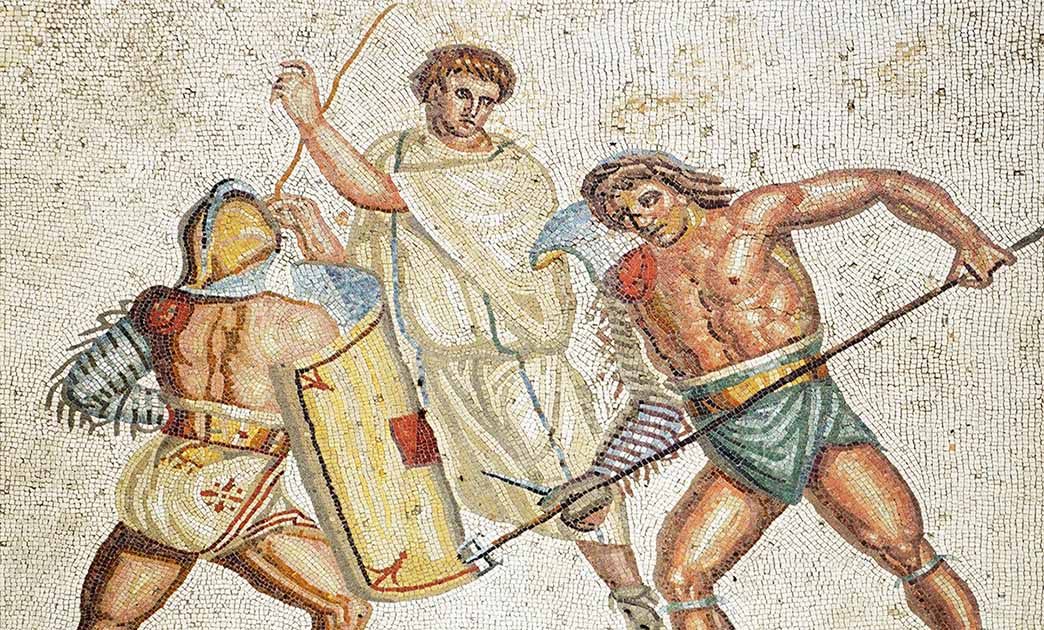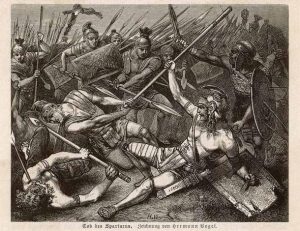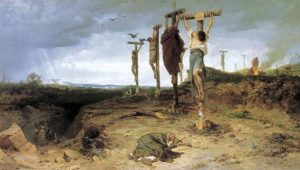Spartacus: The Last Stand of the Rebel Gladiator

Led by the Roman gladiator Spartacus, the Third Servile War stretched on from 73 to 71 BC, an attempt by thousands of Roman slaves to escape the gladiatorial ring. As a Thracian, forced into slavery by the Roman legions he had once fought beside, Spartacus was angered by the stripping of his freedom and took matters into his own hands by gathering his fellow gladiators in rebellion.
Having successfully fled their training school in Capua, Spartacus and his men plundered their way through Italy, defeating Roman legion after Roman legion. With the Senate believing that the Roman state was truly in danger, Marcus Licinius Crassus was chosen next to bring the slave revolt to an end.
Crassus’ Crusade Against Spartacus
A Roman politician and former general under Lucius Cornelius Sulla, Crassus was the wealthiest man in Rome and a powerful and distinguished Roman general in his own right. Crassus offered to prepare and train new troops with his own finances, strategically setting himself up for political maneuvering if he were to return to Rome successful.
In his attempt to suppress the Spartacus rebellion, Plutarch explained that Crassus took his troops to “the borders of Picenum, expecting to receive an attack of Spartacus.” Although he had been ordered not to engage the rebles, his legate Mummius disobeyed and was defeated. Following this decisive moment, when Crassus’ best legate—a general in the Roman army born of the senatorial class—was defected and caused Crassus to lose many of his men, Crassus was forced to lead his armies and confront Spartacus himself.
Eunus: Slave ‘King’ and Leader of the First Servile War
The Real Lives of Roman Gladiators
One of the great mysteries of Spartacus begins here, as it appears Spartacus was leading his men back into southern Italy for unknown reasons after having just beaten Publicola out of Gaul. He went instead to the sea with the intent to take Sicily, according to Plutarch, by starting another servile war there. Spartacus bargained with the Cilician pirates to take him and his men across to the island, thereby also escaping the efforts of Crassus. Instead, the pirates took his money, betrayed him and and left the slave rebels behind instead.

Statue of Spartacus in Tuileries Gardens, Paris, by Charles Nègre. (Public domain)
Around this time, the wars in Hispania and Pontus were coming to an end, both of which were Roman successes. In 71 BC, the successful general Gnaeus Pompeius Magnus (meaning “Pompey the Great”) returned to Rome and took an interest in Spartacus’ uprising.
According to Appian, Pompey was asked by the Roman Senate to provide backup for Crassus’ army, as they believed the threat of Spartacus was still growing and Crassus wasn’t yielding the best results quickly enough.
Because of this second—and somewhat more fearsome—legionary threat, Spartacus attempted to reach an agreement with Crassus to avoid complete decimation. Crassus, however, aware of the prestige that would come with defeating Spartacus, wanted the glory for himself as much as he wanted to ensure Pompey wouldn’t obtain it. He rebuffed Spartacus’ proposal, choosing to take his chances with continued war.
In the wake of this denial, Spartacus attempted to flee a final time to Brundusium with Crassus hot on his tail. Upon reaching Brundusium, Spartacus discovered that Lucullus, the general who had previously defeated Mithridates, was also in the area. Lucullus had returned from his own campaign and had been summoned as reinforcements.
Caught between two powerful Roman military leaders, Spartacus and his men took a last stand in 71 BC, choosing to face Crassus’ army over Lucullus’. With half of his army dead or captured from attempting to attack Crassus on their own, Spartacus and his remaining men faced Crassus’s army by the River Sele for one final battle.

The Death of Spartacus by Hermann Vogel, 1882. (Public domain)
Spartacus and his Last Stand Against the Romans
The battle itself is poorly documented in historical records, particularly because the narrative of the war was likely influenced by Crassus—the victorious leader—upon his return to Rome. However, it is widely accepted that Spartacus met his end on the battlefield alongside his fellow rebels.
Appian claims that Spartacus “was wounded in the thigh with a spear and sank upon his knee, holding his shield in front of him… until he and the great mass of those with him were surrounded and slain.”
While there is no evidence that his body was ever recovered, ancient sources are unanimous in asserting that he perished on the battlefield. Following Spartacus’ death, Crassus captured his surviving followers, and in a brutal display of power, crucified all 6,000 of them along the Appian Way. These crucifixions served as both a testament to Crassus’s triumph and a stark deterrent to any other enslaved individuals contemplating defying the might of the Roman state.
While Spartacus may have proven himself a formidable warrior with several victories over Roman forces, the ultimate victors of the Third Servile War were the Romans. This, of course, was an aspect that Crassus did not want forgotten.

6,000 of Spartacus’ followers were crucified between Rome and Capua. Painting by Fyodor Bronnikov, 1877. (Public domain)
What Was Spartacus Fighting For?
What remains most interesting about Spartacus, aside from the curiosities about his historical beginnings and his exact moment of death, were his motivations. Many would like to believe Spartacus led his revolt in an effort to stop slavery and the inhumane gladiatorial games altogether.
But Spartacus’ actions, and those of his men, were considerably less honorable. For much of their time was spent plundering cities and the countryside, and it is believed he wanted to go to Sicily to pillage their riches as much as start another rebellion there. This may not be the case, however, and the plundering and looting may have been intended to keep up morale and restore much of the wealth that many of the slaves had lost.
There is a theory that he had been attempting to return many of the men to their homes—a fact which would account for his sudden turn back to southern Italy not long before his death. But neither theory has been recorded by any of the ancient scholars who have written extensively on the subject.
Nameless Immigrants and Slaves in Rome, Who Were They? Where Did They Come from?
The Kingdom of Hayti and the Slave that Pronounced Himself King
Nevertheless, Spartacus remains an intriguing character for modern historians and classicists to examine. His motives are at the heart of many analyses, but his revolt against Rome still stands as one of the most successful rebellions recorded.
Furthermore, if not for the victory of Crassus over Spartacus, the transition from Roman Republic to the Roman Empire may have never come to pass. The Roman elite learned valuable lessons from the Spartacus rebellion, along with other important events, about the need for a strong, centralized military and the dangers of slave uprisings. This awareness influenced the military and political reforms during the early Roman Empire, under the leadership of Augustus, who sought to consolidate power and prevent such uprisings in the future.